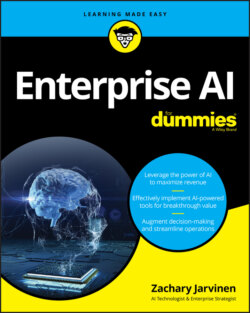Читать книгу Enterprise AI For Dummies - Zachary Jarvinen - Страница 89
Reducing bias
ОглавлениеBecause AI systems are designed by humans, it is not a surprise that they would have bias in them. It can start at the very beginning when the problem is framed, in data collection, data preparation, or in all three.
As Microsoft’s experiment with Twitter revealed, an algorithm maximizes success as defined by the designers. Solon Barocas, an assistant professor at Cornell University who specializes in fairness in machine learning, pointed out that an issue arises while framing the problem when “those decisions are made for various business reasons other than fairness or discrimination. If the algorithm discovered that giving out subprime loans was an effective way to maximize profit, it would end up engaging in predatory behavior even if that wasn’t the company’s intention.”
Increasingly, social media has become a textbook case of algorithmically-enforced confirmation bias, or emergent bias. Emergent bias isn’t based on the source data, but rather on how the algorithm interacts with the user. For example, if a user likes, favorites, or subscribes to content with a certain viewpoint, such as articles about vaccinations, vegan diets, politics, or even exotic coffee, the algorithm feeds that user more content with the same viewpoint and excludes content from an opposing viewpoint. For example, coffee lovers get more content about the positive effects of coffee consumption and less content about the negative effects of excessive caffeine intake. Over time, the platform magnifies the echo-chamber effect of self-validation, amplifying the person’s inherent bias.
As of this writing, automated and human-in-the-loop tools to address bias, security, compliance, and transparency are appearing in the marketplace.
When determining a specific use case for AI, consider these guidelines:
1 Create a process that guides the development of trustworthy AI aligned with human values.
2 When framing the problem, seek a wide consensus of people to assure that the rewards are neutral and non-discriminatory.
3 Select people with a diverse set of perspectives to build the models.
4 Use diverse and high-quality relevant data.
5 Scrub your sources for bad data or hidden bias, such as race, gender, ideological differences, and the like. For example, a bank might remove gender and race from its loan-processing AI model, but U.S. ZIP codes can often serve as a proxy for race. Their inclusion could still lead to biased predictions that discriminate against historically underprivileged neighborhoods.
6 Rigorously examine the criteria for identifying selection variables.
7 Test machines for sources of bias and evidence of bias, and remedy any problems discovered.
